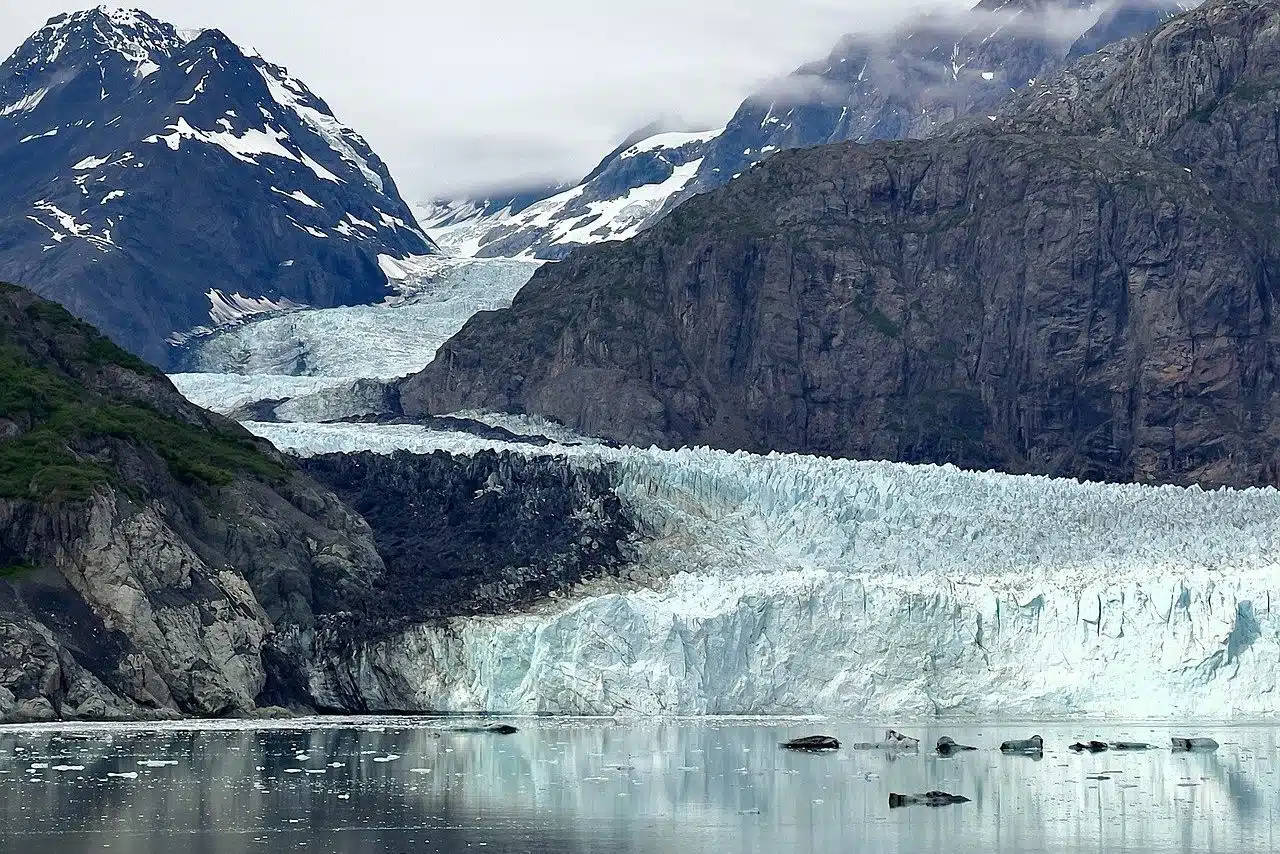
A glacier is an ice structure found in a mountain range.
Glacier is a concept that has its origin in the French glacier and gives its name to the block or structure of ice that usually accumulates in certain areas of the mountain ranges, just above the line that marks the limit of perpetual snow. The lower part of a glacier is in motion , with a very slow slide similar to that of a river .
It should be noted that glaciers store 33 million km3 of fresh water and occupy 10% of our planet 's surface. According to experts, they are formed as a result of the compaction and recrystallization of snow , while their conservation is determined by the levels of snow precipitation (which exceed the evaporation that takes place in summer). For this reason, glaciers are usually located near the poles or in mountainous territories.
Emergence of a glacier
When snow falls on land in a region where temperatures remain below freezing , it changes its structure and recrystallizes, forming ice grains that are thicker and spherical in appearance. These ice grains are known as neviza .
As the snow continues to fall and turns into sleet, it begins to accumulate and the lower layers suffer increasingly stronger pressure. Little by little, the weight ends up developing larger ice crystals, with a layer of several tens of meters. In this way, glacial ice develops and glaciers emerge.

The Perito Moreno glacier is one of the main tourist destinations in Argentina.
The danger of melting ice caused by global warming
Global warming is a very serious problem for glaciers: the higher the temperature, the faster the glaciers melt and begin to retreat. This can cause ocean levels to rise and lead to major flooding.
With increasing temperatures , glaciers undergo obvious transformations: melting. Although this is a natural cause that is repeated every spring , in recent years this process has increased, reaching a point where the thaw has surpassed the crystallization, that is, it occurs at such an accelerated speed that it leaves no time. to the recovery of the ice sheets.
This has consequences such as an increase in the masses of H2O on Earth, which leads to flooding, extinction of species whose habitat is ice, and drastic changes in ecosystems across the planet. It is very likely that in the future we will have severe problems in obtaining a supply of drinking water , since 60% of the total we consume comes from glaciers.
One of the fundamental causes of this thaw is, as we have said before, the warming of the planet, which is related to the emission of gases into the atmosphere. Furthermore, because of this increase in temperature and the scarcity of ice and snow, the land and sea must absorb a greater amount of sunlight , which ensures warming.
The complete melting of the glaciers, in addition to meaning an irrevocable loss, would imply an increase in the mass of the oceans, which would advance over the earth's surface, burying many of the coasts in their path , triggering hundreds of unthinkable ecological problems.
Unfortunately, human beings seem to only care about our species and not worry about all the imbalances we cause in our environment; However, it is necessary that once and for all we understand that our actions not only have an impact on the environment but also on our lives because, if the glaciers melt and the temperature continues to increase, we will not only have put the life of the planet at risk, but also the survival of our species. The thing is that even looking at the problem from a speciesist and individualist perspective, we cannot remain indifferent.
